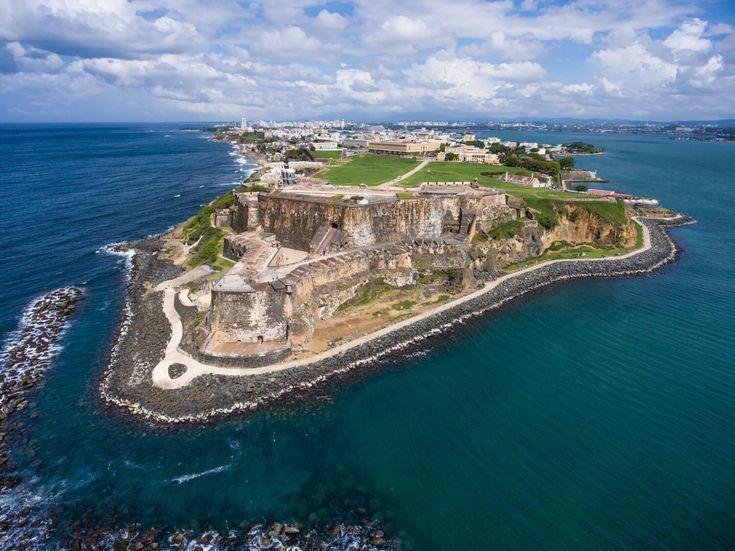Historia del morro puerto rico: Castillo san felipe del morro
la historia del Castillo San Felipe del Morro
— Libros787.com
Compartir:
febrero 4, 2023
Por: Carlos A. Goyco Blechman | Libros787.com
El Castillo San Felipe del Morro es una fortificación histórica ubicada en el Viejo San Juan que ha desempeñado un papel importante en la defensa de la ciudad y el patrimonio cultural durante más de cuatro siglos. Situado en lo alto de una colina con vista a la bahía de San Juan, este castillo es un símbolo poderoso de la rica historia y el pasado militar de la isla.
En este blog, te quiero contar brevemente la fascinante historia del Castillo San Felipe del Morro, trazando su evolución desde una fortaleza colonial española hasta un sitio histórico nacional, y exploraremos su lugar en la historia cultural y militar de Puerto Rico.
La historia de este impresionante castillo se remonta al siglo XVI, cuando el gobierno colonial español comenzó la construcción de la fortaleza en 1539. A lo largo de los siglos, la fortaleza experimentó varias renovaciones y expansiones, reflejando las cambiantes tecnologías militares y amenazas a la ciudad.
A lo largo de los siglos, la fortaleza experimentó varias renovaciones y expansiones, reflejando las cambiantes tecnologías militares y amenazas a la ciudad.
📚 Algunos libros de interés:
History of Puerto Rico: A Panorama of its People, por Fernando Picó
San Juan, ciudad de castillos y soldados, por Milagros Flores Román, Luis A. Lugo Amador & José Cruz de Arrigoitia
Viejo San Juan: Historia Militar, por Edwin Miner Solá
Tiny Travelers: Puerto Rico Treasure Quest, por Wolfe & Jaramillo
Durante los siglos XVI y XVII, El Castillo San Felipe del Morro sirvió como una defensa crucial contra los ataques de barcos piratas y potencias extranjeras. En 1898, Estados Unidos tomó control de Puerto Rico durante la Guerra Hispano-Americana, y El Morro continuó siendo utilizado como una instalación militar hasta 1961.
En 1983, El Castillo San Felipe del Morro fue declarado Patrimonio Histórico Nacional por el Servicio de Parques Nacionales, y ahora está abierto al público como museo y atracción histórica. Los visitantes pueden recorrer las fortificaciones y conocer su rica historia, incluida su papel en la Guerra Hispano-Americana y su conversión eventual en museo.
Los visitantes pueden recorrer las fortificaciones y conocer su rica historia, incluida su papel en la Guerra Hispano-Americana y su conversión eventual en museo.
Hoy en día sigue siendo un símbolo de la rica historia y el patrimonio cultural de Puerto Rico. El castillo es un destino turístico popular, atrayendo a visitantes de todo el mundo que vienen a explorar sus fortificaciones bien conservadas y conocer su lugar en la historia puertorriqueña.
Si quieres conocer más sobre la historia del Castillo San Felipe del Morro te invitamos a escuchar el “audio tour” curado por Free Audio Guides:
Free Audio Guides ofrece los mejores y más inmersivos tours de tus destinos de viaje favoritos, grabados por expertos locales en formato podcast. Siempre gratis, sin nada que alquilar y sin ninguna aplicación que descargar.
Compartir:
Artículo siguiente
Sobre la autora: Tinta, papel, tiempo (Y lo que nunca dije)
Los tesoros históricos de Puerto Rico encantan a los visitantes
Puerto Rico
Alamy Stock Photo
1 de 1
Carlos Almodóvar trabaja en el Castillo San Felipe del Morro y en el Castillo San Cristóbal desde hace 16 años, originalmente en el área de recursos culturales y, más recientemente, como guardabosques e intérprete.

El nacido en Puerto Rico disfruta compartir su pasión por la historia de la isla con los visitantes. “Me encanta el hecho de que se puedan explorar siglos de historia en este lugar, entre las enormes murallas de los fuertes y las imponentes torres”, dice Almodóvar.
Una atracción popular de la isla
El Morro y San Cristóbal son los dos fuertes que componen el San Juan National Historic Site (Sitio Histórico Nacional San Juan), que atrae a más de un millón visitantes anualmente. Una de las cosas que Almodóvar más disfruta es pasear por los vastos campos de batalla que conducen hacia El Morro. “Son muy populares entre las personas que encumbran cometas y también cuentan con excelentes vistas de la puesta de sol en el muelle”, comenta.
Carlos Almodóvar, park ranger/interpreter at Castillo San Felipe del Morro and Castillo San Cristóbal in San Juan, Puerto Rico
Ver más
Más información
- San Juan National Historic Site
Una historia longeva y rica
El Morro se construyó para defender San Juan (la capital de Puerto Rico) de los ataques provenientes desde la bahía. En una de las baterías, Almodóvar les muestra a los visitantes un fragmento de un proyectil de artillería que se encuentra alojado en el techo, lo que demuestra la longeva historia del fuerte (la torre data de 1539 y el proyectil, que pertenece a la Guerra hispano-estadounidense, data de 1898).
En una de las baterías, Almodóvar les muestra a los visitantes un fragmento de un proyectil de artillería que se encuentra alojado en el techo, lo que demuestra la longeva historia del fuerte (la torre data de 1539 y el proyectil, que pertenece a la Guerra hispano-estadounidense, data de 1898).
Quizás te guste
Una atracción multifacética y con varios niveles
El famoso faro del fuerte, que se encuentra abierto para recorridos públicos, se construyó en 1846 y se reconstruyó en 1908. En la capilla grecorromana, que cuenta con muchos detalles, Almodóvar les señala a los visitantes cómo los albañiles, gracias a sus habilidades, lograron darle forma a esta intrincada estructura. En términos generales, el fuerte cuenta con seis pisos, todos con cañones que han defendido la capital.
El menos conocido San Cristóbal
San Cristóbal, que fue construido para resistir ataques terrestres, es enorme, ya que comprendía 11 hectáreas cuando se concluyó su construcción en 1783 (desde entonces, se han demolido secciones del terreno). Los lugares favoritos de Almodóvar para mostrarles a los visitantes son los túneles y los pasadizos, que se construyeron para atacar al enemigo por debajo y para permitir que las tropas españolas transitaran sin ser detectadas por varias partes del fuerte.
Los lugares favoritos de Almodóvar para mostrarles a los visitantes son los túneles y los pasadizos, que se construyeron para atacar al enemigo por debajo y para permitir que las tropas españolas transitaran sin ser detectadas por varias partes del fuerte.
Quizás te guste
El Puerto Rico de Almodóvar
Más allá de los fuertes, Almodóvar disfruta exhibir la isla en la que nació. “En Viejo San Juan, recorremos el Paseo de la Princesa, un paseo del siglo XIX, para observar los cruceros y darle un vistazo a las tiendas”, comenta.
Otros lugares que Almodóvar les recomienda a los visitantes son: el bosque lluvioso en El Yunque, las Camuy Caves (cuevas Camuy) y la isla de Culebra, que cuenta con preciosas playas. Un lugar menos popular es Cabo Rojo, ubicado al suroeste, donde sugiere explorar la zona que rodea el faro, los acantilados y las minas de sal.
Más información
- El Yunque National Forest
- Rio Camuy Cave Park
- See Puerto Rico
Temas relacionados:
- Historia y cultura
- Atracciones
- Historia
- Punto de referencia
Ver más
Más experiencias cercanas
Ver más experiencias
Explorar más
San Juan – capital of Puerto Rico –
San Juan – capital of Puerto Rico – | Articles on tourism from votpusk.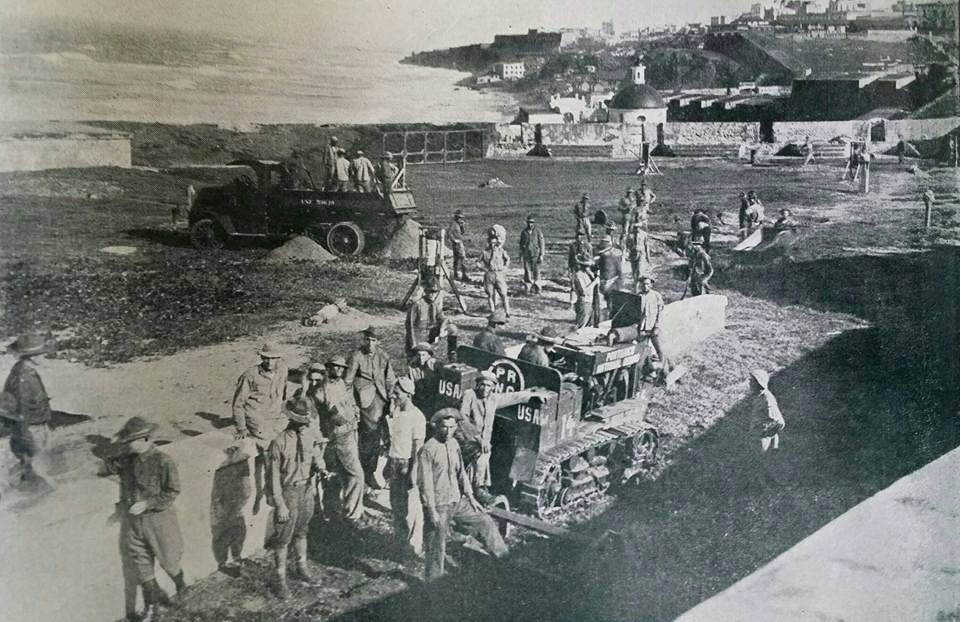 ru
ru
Top 7 best
spa hotels in Russia
Top 7 best
spa hotels in Russia
3164 views
0 like
share
Vkontakte
Odnoklassniki
Copy
Interesting
- San Juan
- Map of San Juan
- San Juan Photos
What else to read?
- Where is Puerto Rico located?
- Flag of Puerto Rico
- Puerto Rico Island
- Puerto Rico beaches
- Official languages of Puerto Rico
- Resorts Puerto Rico
- Metro San Juan: map, photo, description
- San Juan is the capital of Puerto Rico
- How long is the flight to Puerto Rico from Moscow?
- Rivers of Puerto Rico
All articles
Many cities on the planet have beautiful symbolic names, for example, the capital of Puerto Rico, the beautiful city of San Juan, is named after one of the most famous Christian saints – John the Baptist.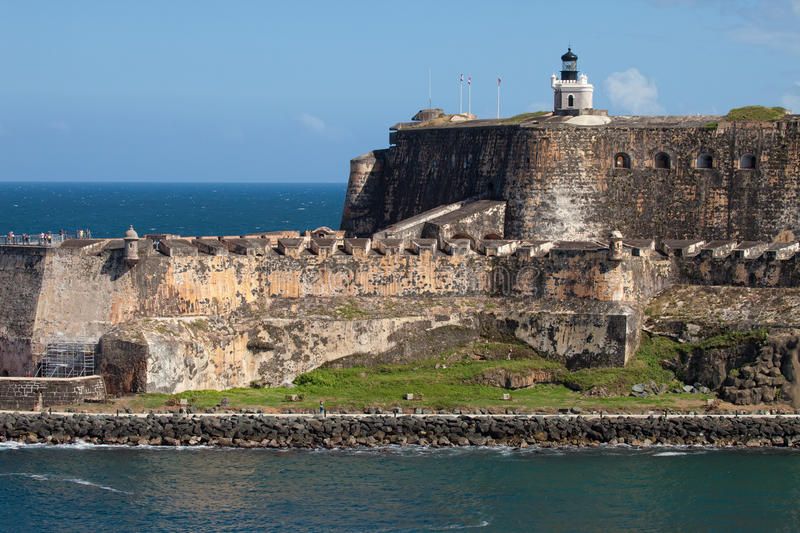
One of the oldest
It is clear that the name of the city comes from the Spanish language, and the founders of the city are Spanish colonizers. The first name was practically no different from the modern name of the state – “City of Puerto Rico” and meant “rich port” in Spanish. Soon the residents of the capital will celebrate a very significant date – the 500th anniversary of the founding.
The capital is not only the oldest city of Puerto Rico, it is older than many American cities, the foundation of which had a hand in colonists from Europe. Older in this part of the world is only the city of Santo Domingo, which is located on the territory of the Dominican Republic.
Places of Historic Significance
Since the capital of Puerto Rico has such a venerable age, historical buildings and structures have been preserved in the city. The most notable among them are those that were built to defend the settlements of the colonists from external enemies in the first place – the fort of San Felipe del Moro and the fort of San Cristobal.
The history of the capital began with a Spanish colony, but it cannot be said that the settlers lived easily and simply in the conquered territories. Firstly, the peace-loving indigenous population very soon began to understand the purpose for which the uninvited guests appeared here. Secondly, the port of San Juan, carrying a lot of expensive and valuable cargo, became the target of pirates of all stripes and colonists from other countries. The city survived the attacks of the British, Dutch and Americans.
Hospitable San Juan
The modern capital of Puerto Rico does not want to participate in hostilities, on the contrary, it strives to create a friendly, hospitable image, all areas of the tourism business are actively developing.
Today you can take a walk with a tour of the historical center, where cobbled streets, picturesque architectural structures and houses built by the colonialists have been preserved. The preserved forts and La Fortaleza, one of the oldest mansions in the Puerto Rican capital, require special attention.
Olga Sokolova
All articles by the author
Like this article?
Subscribe to our channel and don’t miss new articles!
Our channel in Yandex Zen
Interesting
- San Juan
- Map of Puerto Rico
- Map of San Juan
- San Juan Photos
What else to read?
- Where is Puerto Rico located?
- Flag of Puerto Rico
- Puerto Rico Island
- Puerto Rico beaches
- Official languages of Puerto Rico
- Puerto Rico Resorts
- Metro San Juan: map, photo, description
- San Juan is the capital of Puerto Rico
- How long is the flight to Puerto Rico from Moscow?
- Rivers of Puerto Rico
All articles
Attractions
All attractions
Hotels
San Juan
All hotels
Discount tours
All tours
Travel by yourself to San Juan
From
Popular articles
All articles
Vkontakte
Odnoklassniki
Copy
Puerto Rico-Puerto Rico – About travel
San Juan.
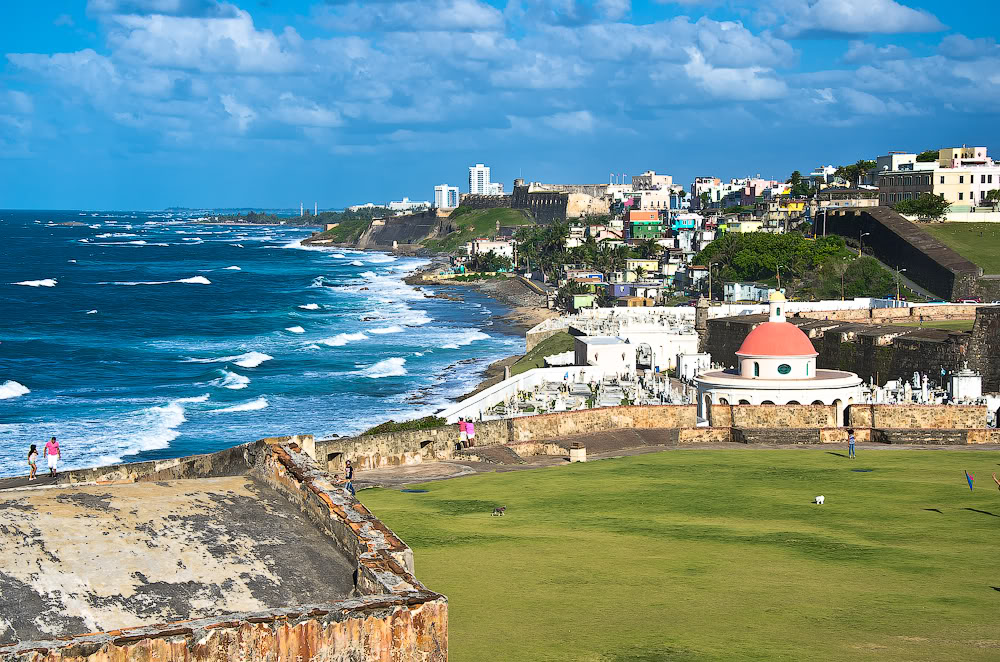 Introductory part.
Introductory part.
Here I will tell you about my trips to this country and a tour of the country’s capital, or rather a self-governing region of the United States. Immediately after leaving the ship, we find ourselves in Old San Juan. Straight and left. Near the old town is the fortress of Morro. Near the pier, usually there are sightseeing buses. The price is 20 dollars. They first go to the new city, then to the fortress, and end the tour in Old San Juan. In my stories, I will tell the old city, the avenue of stars in Ashford Avenue, Hard Rock Cafe, Morro Fortress and Old San Juan.
Port of Puerto Rico
A bit about Puerto Rico.
Libre Asociado de Puerto Rico, a self-governing insular commonwealth of the West Indies associated with the United States. Puerto Rico, Spanish for Good Port. The easternmost island of the Greater Antilles chain, it is located about 50 miles (80 km) east of the Dominican Republic, 40 miles (65 km) west of the Virgin Islands, and 1,000 miles (1,600 km) southeast of the US state of Florida. It is located in the northeast of the Caribbean Sea, its northern coast faces the Atlantic Ocean. Two small islands off the east coast, Vieques and Culebra, are part of Puerto Rico, as is Mona Island to the west. Compared to its neighbors in the Greater Antilles, Puerto Rico is one-fifth smaller than the Dominican Republic, one-third smaller than Haiti, and slightly smaller than Jamaica. It is roughly rectangular in shape, extending 111 miles (179km) from east to west and 39 miles (63 km) from north to south. The capital is San Juan.
It is located in the northeast of the Caribbean Sea, its northern coast faces the Atlantic Ocean. Two small islands off the east coast, Vieques and Culebra, are part of Puerto Rico, as is Mona Island to the west. Compared to its neighbors in the Greater Antilles, Puerto Rico is one-fifth smaller than the Dominican Republic, one-third smaller than Haiti, and slightly smaller than Jamaica. It is roughly rectangular in shape, extending 111 miles (179km) from east to west and 39 miles (63 km) from north to south. The capital is San Juan.
The Puerto Ricans, or boriqua (as they call themselves), have a mixed Spanish, American and Afro-Caribbean culture. The island’s social and economic conditions are generally of Latin American standards, due in part to its ties to the United States (including the presence of US-owned manufacturing plants and military bases in the Commonwealth).
History of Puerto Rico.
The first inhabitants of Puerto Rico were hunter-gatherers who reached the island more than 1000 years before the arrival of the Spaniards. By 1000 A.D. Arawak Indians settled here and developed the Taíno culture. The clan Taíno lived in small villages headed by a cacique, or chief. They had limited knowledge of agriculture, but they cultivated domesticated tropical crops such as pineapples, cassava, and sweet potatoes and supplemented their diets with seafood. At the end of the 15th century, 20,000–50,000 Tainos lived in Puerto Rico, which they called Borinquén, or Boriken. Covertly repelled attacks by its Carib neighbors from the islands to the south and east, including the Virgin Islands and Vieques from time to time.
By 1000 A.D. Arawak Indians settled here and developed the Taíno culture. The clan Taíno lived in small villages headed by a cacique, or chief. They had limited knowledge of agriculture, but they cultivated domesticated tropical crops such as pineapples, cassava, and sweet potatoes and supplemented their diets with seafood. At the end of the 15th century, 20,000–50,000 Tainos lived in Puerto Rico, which they called Borinquén, or Boriken. Covertly repelled attacks by its Carib neighbors from the islands to the south and east, including the Virgin Islands and Vieques from time to time.
In 1493 Christopher Columbus left Spain on his second voyage to India with a large expedition of 17 ships and about 1500 men. On the island of Guadeloupe, the Spaniards rescued some Taino prisoners whom the Caribs had taken from the Boricanes, and Columbus agreed to return them to their island. On November 19, 1493, Columbus anchored in a bay on the west coast of Boriquen, which he quickly renamed San Juan Bautista (“Saint John the Baptist”) and claimed to belong to the Spanish monarchs Ferdinand II and Isabella I.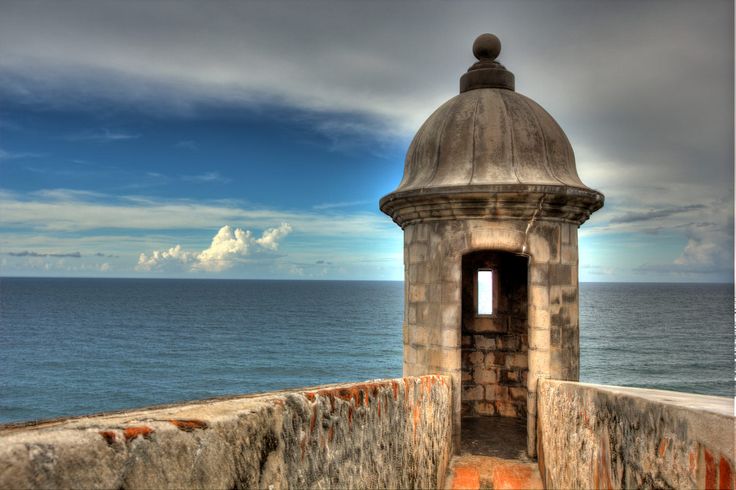 day, before sailing west to Hispaniola, where they established the first permanent settlement in the New World.
day, before sailing west to Hispaniola, where they established the first permanent settlement in the New World.
For 15 years, San Juan Bautista was neglected, except for occasional visits from a supply ship. In 1508, Juan Ponce de León, who had accompanied Columbus and worked to colonize Hispaniola, was allowed to explore the island. On the north coast, Ponce de León found an exceptionally well-defended bay, which could contain a large number of sailing ships; on the high ground by the bay he founded Caparra, the first city of the island and the site of the first mining and agricultural work. By 1521, the city had been moved to an islet at the northern end of the harbor and renamed Puerto Rico (“Rich Port”). Over time, the port became known as San Juan, and the name Puerto Rico came to be applied to the entire island.
The Taíno soon lost respect for their Spanish “protectors”, who expected the Indians to act as vassals, pay tribute in gold and food, and receive instruction in the Christian religion. Meanwhile, European diseases (to which the Spaniards were largely immune) and mistreatment began to devastate the Taíno population. In 1511, the Indians revolted, but had only temporary success against the better-armed Spaniards, who enslaved them again. Subsequently, the Spaniards brought Indian slaves from nearby islands and black slaves from Africa to fully man their placer mines. However, gold production declined markedly after the 1530s, and many Europeans migrated to other places.
Meanwhile, European diseases (to which the Spaniards were largely immune) and mistreatment began to devastate the Taíno population. In 1511, the Indians revolted, but had only temporary success against the better-armed Spaniards, who enslaved them again. Subsequently, the Spaniards brought Indian slaves from nearby islands and black slaves from Africa to fully man their placer mines. However, gold production declined markedly after the 1530s, and many Europeans migrated to other places.
Those who remained set up sugarcane and ginger plantations with their African slaves, but the colony continued to lead a precarious existence. Groups of Caribs from neighboring islands made frequent raids, carrying off food and slaves and destroying property. Puerto Rico was further ravaged and sacked by French, British and Dutch pirates. In the middle of the 16th century, French troops repeatedly burned and sacked San Germán, the second settlement on the island. More and more colonists left the island.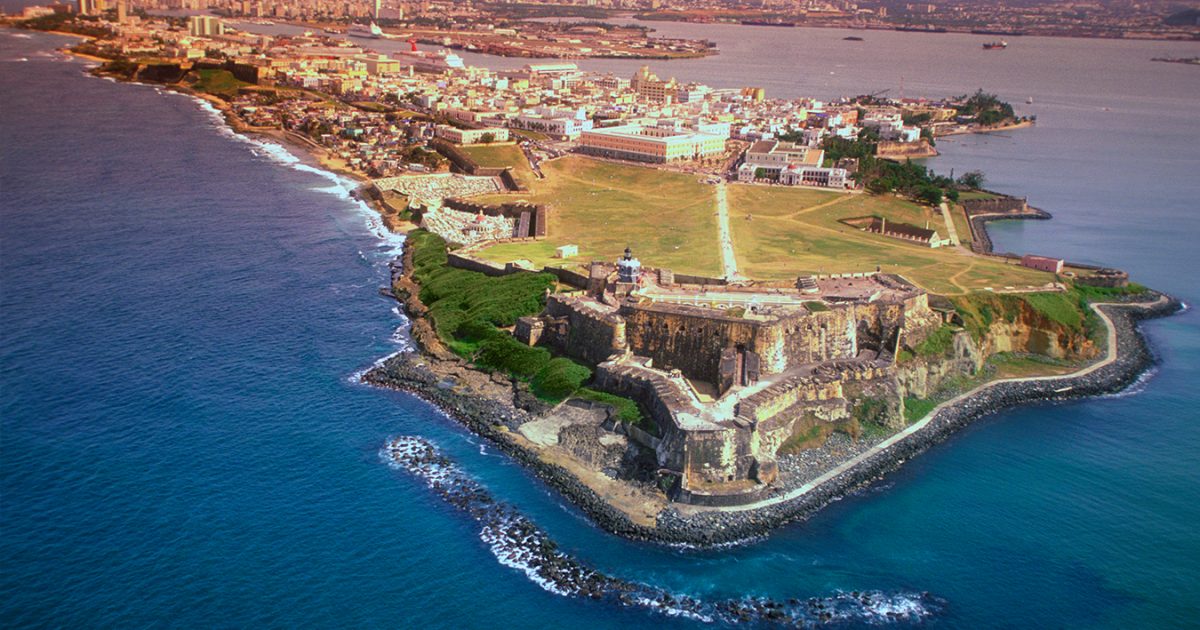
El Morro Fortress
In the second half of the 16th century, Spain, realizing the strategic importance of Puerto Rico, undertook to turn San Juan into a military outpost, using financial subsidies from Mexican mines. They initially built a fortified palace for the governor called La Fortaleza (“Fortress”), and then the massive castle of San Felipe del Morro (El Morro), which was ideally positioned to dominate the narrow harbor entrance. Finally, they added a stronger and larger fortress (San Cristobal) to the northeast, on the Atlantic side of the city. At the beginning of the 17th century, the city was surrounded by a stone wall 25 feet (8 meters) high and 18 feet (5 meters) thick, two parts of which have survived to this day. This defense made San Juan almost impregnable.
In 1595 Sir Francis Drake attacked the city with a sizable fleet, but was unable to silence his guns. Three years later, a British soldier, George Clifford, 3rd Earl of Cumberland, captured the city, but was soon forced to leave after his troops fell victim to a disease (probably dysentery). In 1625, the Dutchman Bowdoin Hendrik captured and burned the city, but could not subdue El Morro, where the governor had taken refuge.
In 1625, the Dutchman Bowdoin Hendrik captured and burned the city, but could not subdue El Morro, where the governor had taken refuge.
San Juan, the most vulnerable military outpost guarding the Spanish empire of the New World, received political and economic attention from the mother country; however, the island’s villagers, or jíbaros, were generally ignored by Spain and despised by the people of San Juan. In this way, the jibaro protected themselves and cultivated their small landholdings. While the French, British, Danes, and Dutch fought over and settled the Lesser Antilles during the 17th and 18th centuries, San Juan’s colonial authorities rarely ventured outside their walls for fear of pirate attacks; however, the jíbaros, ignoring the edicts of Spain, prospered somewhat through underground trade with non-Spanish merchants. Ginger, hides, sugar cane, tobacco, and cattle from the island were in high demand. The contact of the settlers with foreigners did not turn them away from their native country – which the Spanish crown feared – on the contrary, they remained loyal and wanted to participate in military expeditions.
Liberal Reforms and Regional Unrest
In the 18th century, the Spanish Bourbon rulers ordered their colonial representatives to implement sweeping economic and administrative reforms that facilitated trade between Puerto Rico and Spain, stimulated agricultural production, and united the island’s various military units under a single command – all for in order to transform Puerto. Rico has gone from a financial leak to a major economic asset. The enlightened despotism of the Spanish Bourbons encouraged the commercial agriculture of Puerto Rico. The island’s population grew rapidly, from about 45,000 in 1765 to over 103,000 in 1787 and 155,000 in 1800. By the end of the 18th century, there were 34 cities on the island. Larger immigrant groups included Canary Islanders, French settlers from Louisiana or Haiti, and Spaniards from Santo Domingo (later Dominican Republic) who were handed over to Napoleon I of France. Among other innovations, the newcomers introduced methods for growing more cash crops. Coffee, introduced to the island in 1736, had become an important export by 1776, and sugarcane, which until then had only been produced there in small quantities, was augmented by large plantations using African slaves. From 1765 to 1800, the number of slaves increased from 5,000 to over 13,300, although the share of slaves in the total population actually decreased due to the large influx of European colonists.
Coffee, introduced to the island in 1736, had become an important export by 1776, and sugarcane, which until then had only been produced there in small quantities, was augmented by large plantations using African slaves. From 1765 to 1800, the number of slaves increased from 5,000 to over 13,300, although the share of slaves in the total population actually decreased due to the large influx of European colonists.
In 1797, British General Sir Ralph Abercrombie led a naval force that captured Trinidad, which was a somewhat abandoned Spanish possession off the coast of Venezuela; however, Abercrombie was repulsed when he subsequently attacked Puerto Rico.
In 1808, when Napoleon I invaded the Iberian Peninsula and placed his brother Joseph Bonaparte on the Spanish throne, the colonies of South and Central America claimed their right to self-government on behalf of the imprisoned Bourbon King Ferdinand VII. This demand for temporary self-government grew into a revolutionary movement for independence in much of the region; however, in Puerto Rico, for various reasons, a different sequence of events followed.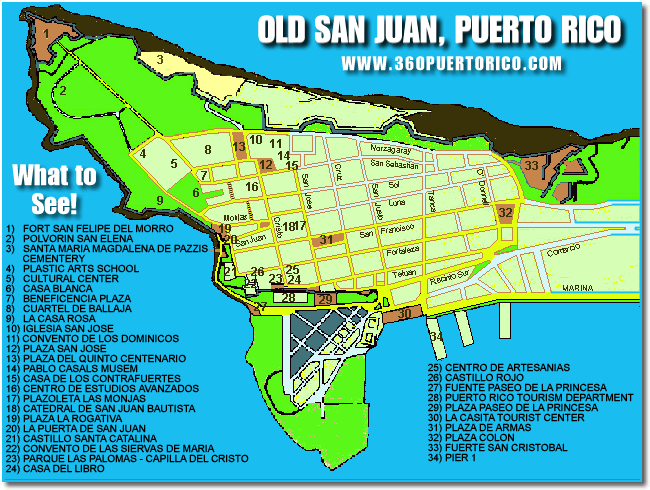 All but one of the main areas of the island had little objection to the harsh mercantilist policies of Spain, which for many decades ceased to affect their livelihoods. In addition, most San Juan residents remained dependent on Spanish administrative and military assistance and willingly followed imperial orders, although they ultimately served French projects.
All but one of the main areas of the island had little objection to the harsh mercantilist policies of Spain, which for many decades ceased to affect their livelihoods. In addition, most San Juan residents remained dependent on Spanish administrative and military assistance and willingly followed imperial orders, although they ultimately served French projects.
As the revolutions progressed on the mainland, many loyal Spanish colonists took refuge in Puerto Rico rather than return across the Atlantic to Europe. In 1815, Spain’s restored Bourbon government granted Puerto Ricans wide economic freedoms in an attempt to reward their past loyalty and secure their future support for the empire. The new reforms opened the island’s ports to trade with foreign merchants, allowed the immigration of all Catholics regardless of nationality, and provided free land to new settlers.
Spanish American War
Spanish American War (1898), which allowed the United States to take Cuba, Puerto Rico, the Philippines and other colonial possessions from Spain.